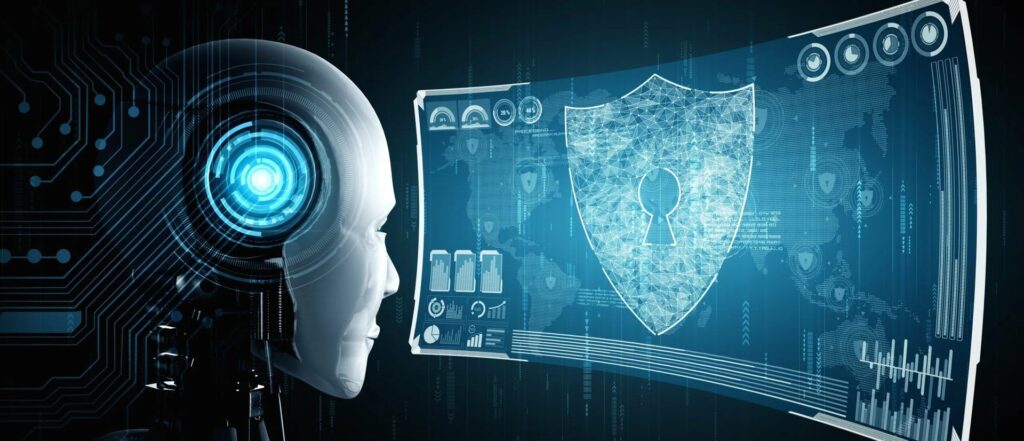Cybersecurity isn’t what it used to be. The digital battlefield has grown more complex, and the stakes are higher than ever. Enter Artificial Intelligence (AI)the ultimate ally in the fight against evolving cyber threats. But how does it actually work? And can it truly outsmart cybercriminals?
Let’s dive into how modern AI is transforming cybersecurity from detecting threats faster than any human could, to predicting attacks before they even happen.
The Role of Artificial Intelligence in Cybersecurity
AI isn’t just a buzzword—it’s a powerful tool that’s revolutionizing how we defend our data. At the heart of AI’s cybersecurity magic is machine learning, a system that learns from data patterns and improves over time.
Rather than relying on outdated virus definitions, AI systems detect unusual behavior or anomalies, helping identify threats that traditional tools often miss.
Core Keywords in Modern AI and Cybersecurity
AI Cybersecurity Tools
These are platforms powered by AI to monitor, analyze, and respond to threats. Examples include Crowd Strike Falcon and Cylance.
Machine Learning for Threat Detection
ML algorithms continuously train on data to recognize malicious activity—making threat detection smarter and faster.
Neural Networks and Anomaly Detection
Neural networks mimic the human brain and help spot patterns that deviate from the norm, such as unauthorized access attempts or data breaches.
Cyber Threat Intelligence
AI collects and analyzes data from millions of endpoints to identify potential threats, helping organizations stay proactive.
Automated Incident Response
When a breach happens, AI can trigger predefined responses—like isolating affected systems—without waiting for human intervention.
Zero-Day Threat Prediction
AI can detect unknown vulnerabilities by analyzing behavior, even if the attack hasn’t occurred before.
Behavioral Analysis in Cybersecurity
By tracking user behavior, AI flags anomalies like an employee logging in at odd hours or downloading massive files.
AI-Driven Security Operations Centers (SOCs)
Modern SOCs use AI to sort through thousands of alerts daily, prioritizing real threats and minimizing alert fatigue.
AI in Malware Detection
Rather than scanning for known signatures, AI evaluates malware behavior to detect even the stealthiest intrusions.
Natural Language Processing (NLP) in Cybersecurity
NLP helps analyze unstructured data—like hacker forums and dark web chatter—to uncover threats.
Real-World Use Cases of AI in Cybersecurity
IBM Watson for Cybersecurity
IBM Watson uses natural language processing and machine learning to analyze thousands of security documents. It speeds up threat identification and offers actionable recommendations.
Darktrace’s Self-Learning AI
Darktrace’s AI mimics the human immune system. It learns what’s normal on a network and flags any behavior that looks suspicious.
Monitoring Network Activity
AI watches for unusual traffic, unexpected logins, or data transfers in real time—providing early warning signs of attacks.
Benefits of AI in Cyber Defense
- Speed and Scalability: AI processes massive volumes of data in seconds—something no human team could match.
- Real-Time Threat Analysis: AI doesn’t sleep. It analyzes threats 24/7.
- Reduced Response Times: AI instantly detects and responds to threats, minimizing damage.
Challenges and Risks of Using AI in Cybersecurity
Even superheroes have weaknesses, right?
- AI Bias and False Positives: AI learns from data—bad data leads to bad decisions.
- Over-Reliance on Automation: Humans still need to oversee the process. AI shouldn’t be the only line of defense.
- AI-Based Attacks: Hackers use AI too—creating smarter phishing campaigns and harder-to-detect malware.
The Rise of AI-Powered Cyber Threats
Yup, cybercriminals have AI in their toolkits too.
- Deepfakes and Phishing: AI can create eerily realistic videos and voice clips to deceive people.
- AI-Generated Malware: Malicious software that adapts and evades detection.
- Social Engineering with AI Tools: AI can scrape personal data and mimic communication styles, making social engineering attacks more convincing.
Balancing Innovation and Security
Sure, AI is powerful, but it needs boundaries.
- Ethical Implications: Who’s responsible if AI makes the wrong call?
- Human Oversight: Machines don’t have instincts—humans are still essential.
- Transparency in Algorithms: AI shouldn’t be a black box. Developers and users need to understand how decisions are made.
The Future of AI in Cybersecurity
It’s looking pretty bright—if we play our cards right.
- Predictive Threat Intelligence: Future AI won’t just react, it will predict attacks before they occur.
- AI and Quantum Computing: A match made in cybersecurity heaven—ultra-fast processing to break or build encryption.
- Regulatory Outlook: Governments are scrambling to catch up with legislation and compliance standards.
How to Leverage AI for Your Cybersecurity Strategy
Choosing the Right AI Tools
Look for tools that align with your needs—whether it’s endpoint protection or threat hunting.
Integrating AI into Existing Systems
Don’t ditch your current setup. Combine AI with traditional cybersecurity tools for a layered approach.
Training Staff
Even the best AI is useless if your team doesn’t know how to use it. Invest in training and education.
Small Businesses and AI Cybersecurity Solutions
AI isn’t just for the big players.
- Affordable AI Tools: Tools like Sophos and Sentinel One offer AI-powered protection at a small-business-friendly price.
- Cloud-Based Solutions: Cloud-based platforms simplify implementation and reduce costs.
- Tips for Implementation: Start small, monitor results, and scale up as needed.
Government and AI Cybersecurity Initiatives
Governments are going all-in on AI for national security.
- National AI Strategies: Countries like the US, UK, and China have published AI roadmaps focused on cyber defense.
- Public-Private Partnerships: Agencies and tech companies are working together to share threat intelligence.
- Global Cooperation: Cybersecurity is a global problem—AI can help unify defenses across borders.
Cybersecurity Career Trends in the Age of AI
Looking to get into cybersecurity? Now’s your time.
- Emerging Roles: AI specialists, threat hunters, and SOC analysts are in high demand.
- Skills Needed: A mix of cybersecurity knowledge, data science, and machine learning expertise will set you apart.
Expert Predictions and Trends
- AI Will Automate 70% of Security Operations by 2030
- Cybercrime Will Become More Sophisticated
- Human-AI Collaboration Will Be the Gold Standard
Conclusion
AI is shaping the future of cybersecurity. While it comes with risks, the benefits far outweigh the drawbacks when used wisely. Whether you’re a business owner, IT professional, or just a tech enthusiast, now’s the time to embrace AI in your cyber strategy. Because in this new digital warzone, intelligence truly is power.
FAQs
1. What is the role of AI in cybersecurity?
AI helps detect, analyze, and respond to cyber threats in real-time using machine learning and data analytics.
2. Can AI prevent cyberattacks completely?
Not entirely, but it significantly reduces risk and improves response times.
3. What are some AI cybersecurity tools available today?
Examples include IBM Watson, Dark trace, Crowd Strike Falcon, and Cylance.
4. Is AI safe to use in cybersecurity?
Yes, if properly managed with human oversight and secure data practices.
5. How can small businesses adopt AI for security?
Start with affordable, cloud-based tools and scale your efforts as needed.


